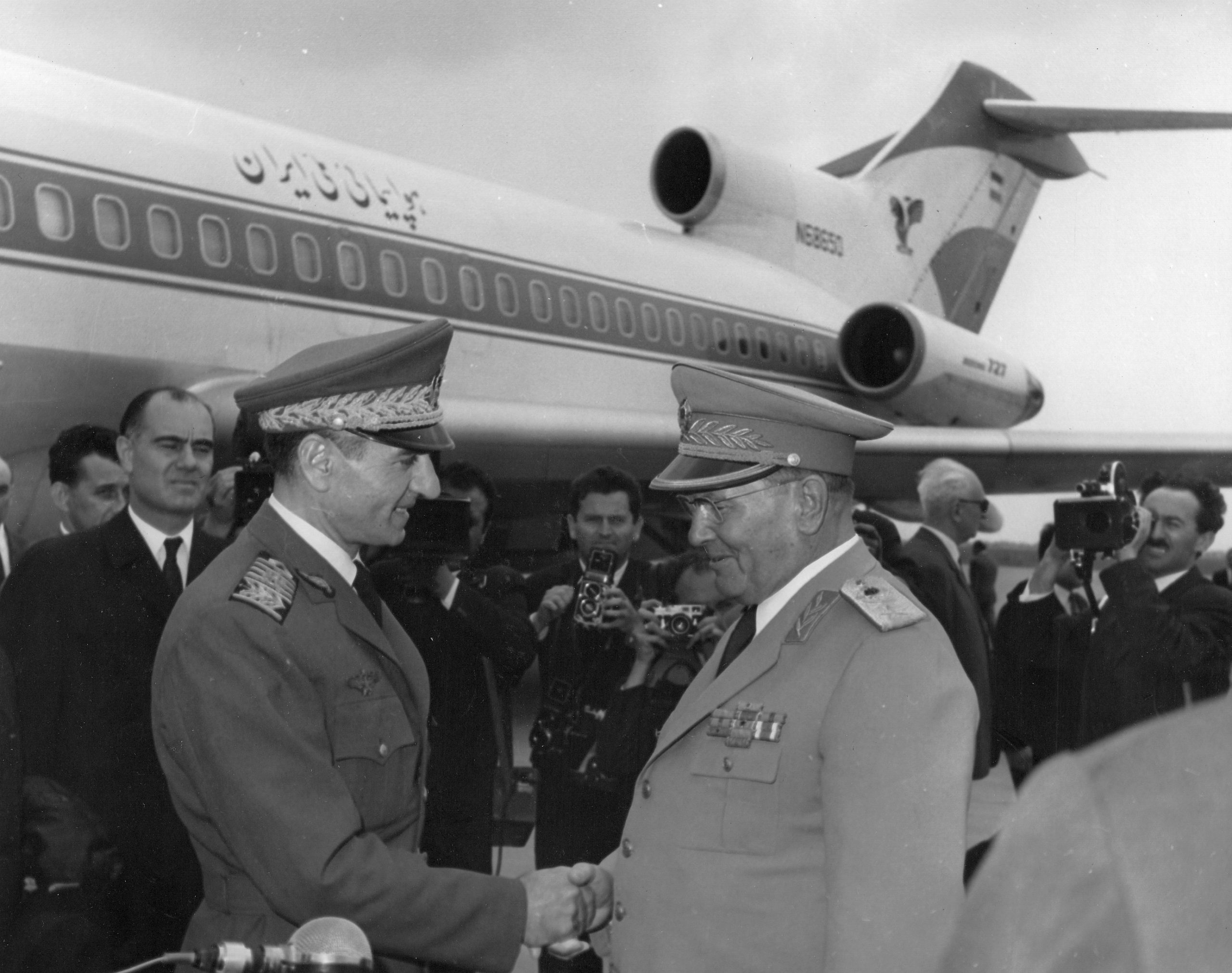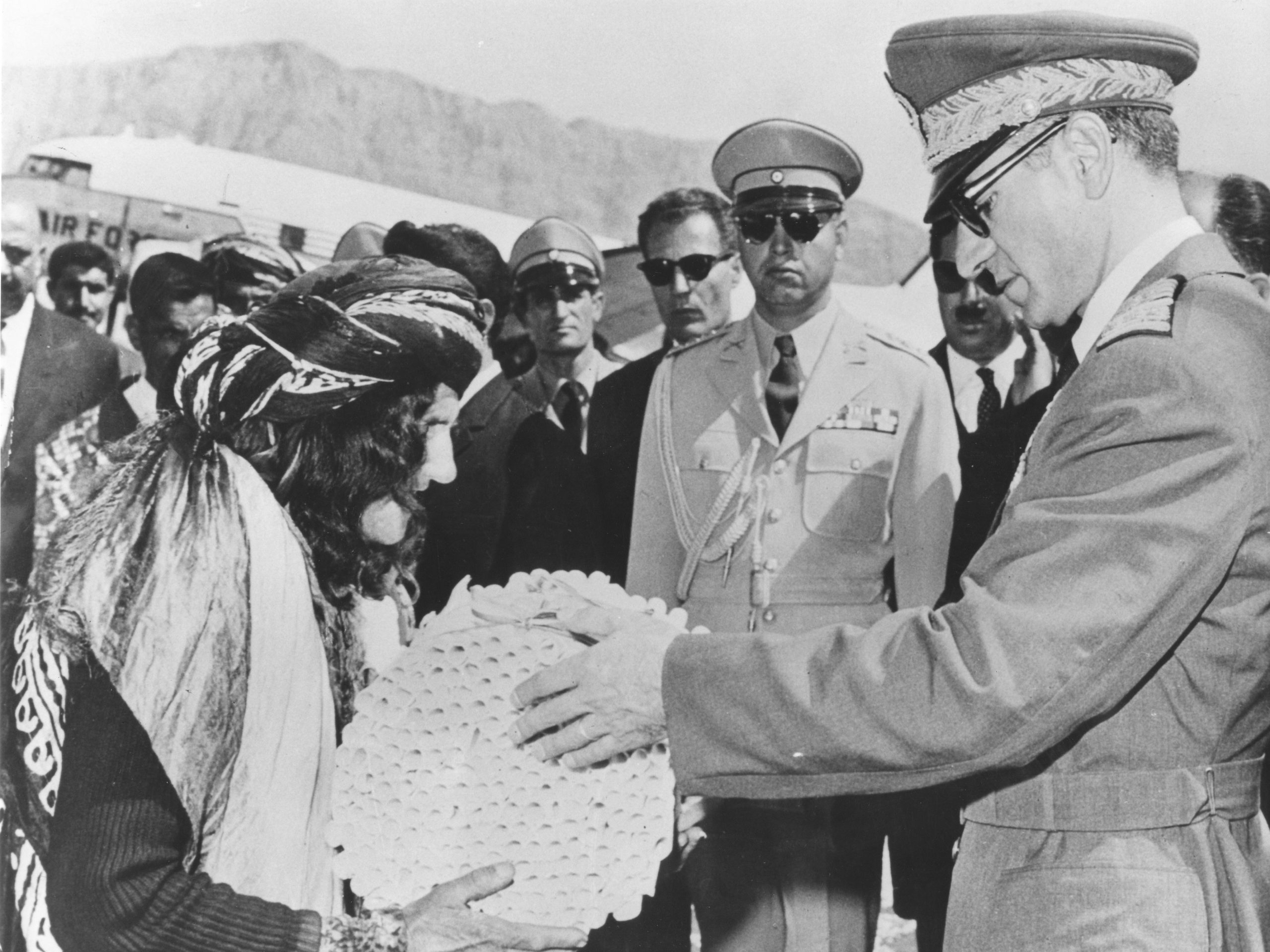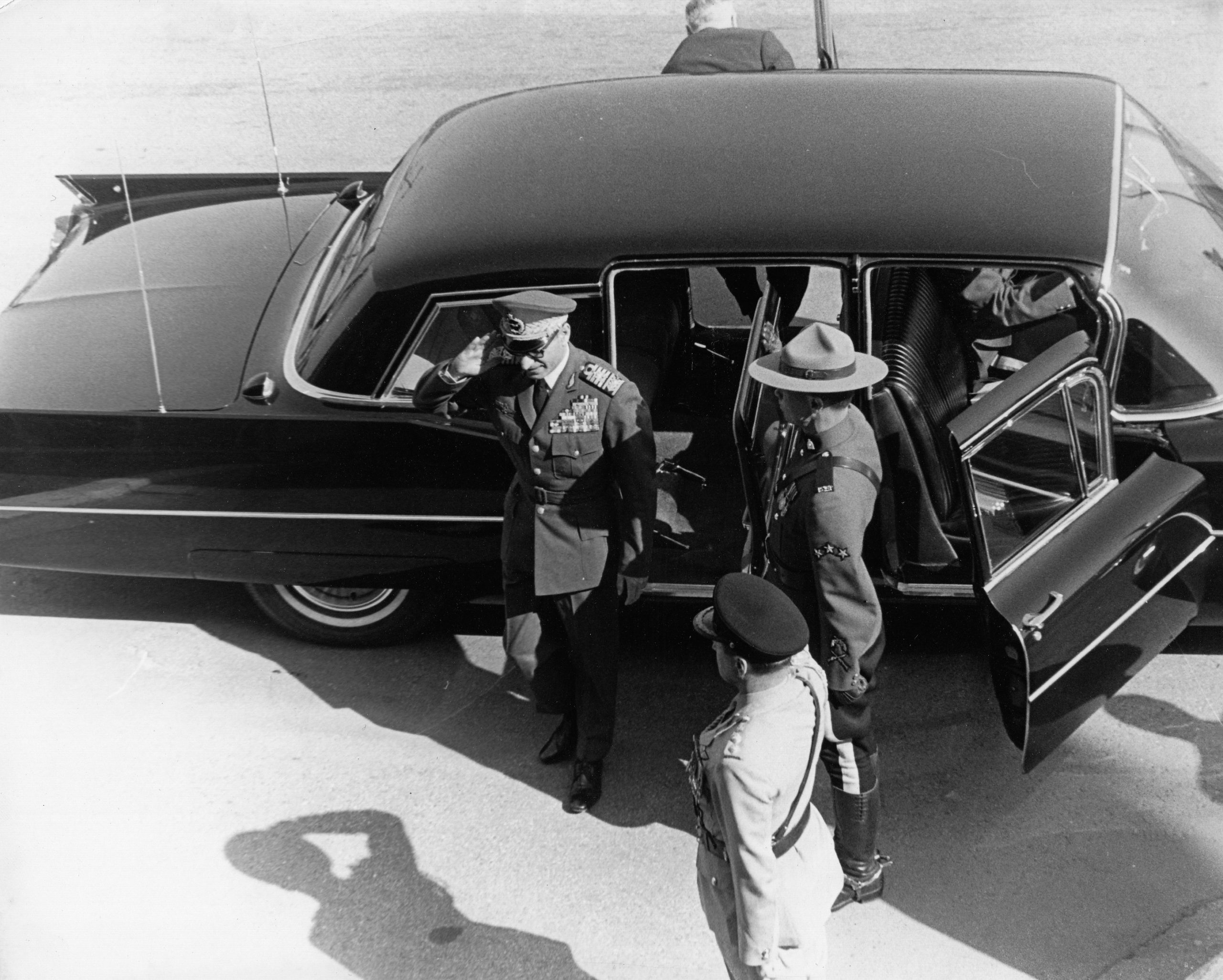The story of Mohammad Reza Shah Pahlavi, Iran's last king, is one that truly captures people's thoughts and feelings. His time at the country's helm, stretching from 1941 until his removal in 1979 during the Iranian Revolution, was a period packed with big changes across how the country was run, its money matters, and the way people lived their lives. Yet, it was also a time that saw a lot of public upset and people speaking out against him.
His period in control was, in some respects, a really hot topic, with what he left behind being shaped by both attempts to bring the country up to date and a way of governing that kept a tight hold on things. This makes figuring out whether he was a good leader quite a task, as opinions differ so much, you know?
People often wonder about the true impact of his rule. Was he a forward-thinking ruler who brought Iran into the modern age, or did his methods lead to the very events that brought his reign to an end? This article takes a closer look at the different sides of his time in power, exploring the big changes he tried to make and the reasons why so many people had strong feelings about him, good and bad.
Table of Contents
- Mohammad Reza Shah Pahlavi - A Life Story
- How Did Mohammad Reza Shah Pahlavi Come to Power?
- Was Mohammad Reza Shah Pahlavi a Dictator?
- The White Revolution and Its Impact on Was Mohammad Reza Shah Pahlavi a Good Leader
- Struggles for Influence and Foreign Ties
- What Happened to Mohammad Reza Shah Pahlavi in the End?
- Differing Views on Was Mohammad Reza Shah Pahlavi a Good Leader
- The Pahlavi Dynasty - A Period of Change
Mohammad Reza Shah Pahlavi - A Life Story
Mohammad Reza Shah Pahlavi, who was the last monarch to rule Iran, came into the world in Tehran on October 26, 1919. His twin sister, Ashraf, was born just a few hours after him. He was the son of Reza Shah Pahlavi, who founded the Pahlavi family line and is often thought of as the person who brought Iran into the present day. From a fairly young age, Mohammad Reza was prepared for a leadership role, getting military instruction and an education outside of his home country. He finished his early schooling in Switzerland, which is that, quite a change from his home, you know? He then came back to Iran in 1935, ready to take on whatever lay ahead.
Personal Details and Bio Data
| Full Name | Mohammad Reza Pahlavi |
| Born | October 26, 1919, Tehran |
| Father | Reza Shah Pahlavi |
| Mother | Taj ol-Molouk |
| Reign | 1941 – 1979 |
| Titles Held | Shah, Arya Mehr, Shahanshah (King of Kings) |
| Education | Primary school in Switzerland |
| Key Initiatives | White Revolution (economic, social, political changes) |
| Overthrow | Iranian Revolution of 1979 |
How Did Mohammad Reza Shah Pahlavi Come to Power?
Mohammad Reza Shah Pahlavi took the throne in 1941, stepping into the shoes of his father, Reza Shah Pahlavi. His father, originally known as Reza Khan, had truly made a name for himself as the person who started the Pahlavi ruling family and, in a way, shaped modern Iran. Reza Shah's smart way of leading and his military skills helped him take control of Tehran in 1921. He later became the king after getting rid of Ahmad Shah Qajar in 1925. Reza Shah's time in charge was marked by many big efforts to bring the country up to date, which, as a matter of fact, really changed things for Iran.
The Pahlavi family line, which guided Iran from 1925 to 1979, shows a truly important time in the country's move toward becoming a modern nation and joining the world stage. This period, started by Reza Shah, was known for widespread changes in how the country was run, its roads and buildings, its schools, and its military. With a clear aim to put power in one central place and lessen the sway of tribal leaders, Reza Shah, you know, set a new course for the nation. This background is pretty important for understanding the world Mohammad Reza Shah stepped into, and what he tried to do with his own rule.
- Retsudao
- Children Of Carmen Trevi%C3%A3%C6%92%C3%A2o
- Emilio Estevez Born
- Aaron Eckhart
- Theresa Earnhardt
Was Mohammad Reza Shah Pahlavi a Dictator?
Mohammad Reza Pahlavi, the last ruler of Iran, is a figure from history that people have very strong, often opposite, opinions about. Whether he was a "dictator" really depends on how you choose to define that word and, of course, the point of view of those who are looking at his time in charge. What one person sees as firm control for the good of the nation, another might see as a ruler taking too much power for himself. It's a bit like that, isn't it?
Despite making a promise to act as a king who would follow the rules of the country's law-making body, Mohammad Reza got more and more involved in how the government was run. He would often go against or put a stop to strong prime ministers, which is that, quite a change from his initial promise. He was, however, often slow to make up his mind, so Mohammad Reza relied more on playing things behind the scenes than on strong, clear leadership. His reign, even though it kept a tight lid on things, did show attempts at making improvements and bringing the country into the present day. So, you know, it's not a simple yes or no answer when considering if he was a dictator.
The White Revolution and Its Impact on Was Mohammad Reza Shah Pahlavi a Good Leader
Mohammad Reza introduced what was called the White Revolution, which was a group of big changes in money matters, social life, and how the country was governed. The goal was to make Iran a powerful country on the world stage and to bring it up to date by having the government take control of important industries and share out land. This plan, in a way, aimed to fix some of the problems that had been around for a long time in the country's social structure and economy. It was a pretty ambitious set of ideas, actually, and it definitely left its mark.
The Shah's White Revolution did help the country grow and develop, but it also caused problems for many people living in Iran. While some saw benefits from land being given out or new schools being built, others, particularly those in traditional farming areas, found their lives turned upside down. This created a lot of different feelings about whether these changes were truly good for everyone. So, you know, while the intentions might have been to move things forward, the real-world results were a bit mixed for many.
Struggles for Influence and Foreign Ties
A fight for control between Mohammad Reza Shah and Mohammad Mosaddegh led to Mosaddegh being removed from his position in 1953. This event happened with some help from the United States and the United Kingdom, which, as a matter of fact, shows how much outside countries were involved in Iran's internal matters at the time. This particular moment in history is often pointed to as a key example of the Shah's reliance on, or perhaps influence by, foreign powers. It's a really interesting point to think about when you consider the larger picture of his rule.
The text also mentions that Mohammad Reza was "weak and malleable, surrounded by sycophants and schemers, beholden to foreign" influences. This suggests that his leadership was, in some respects, not entirely his own. Being easily swayed by those around him and owing favors to countries outside Iran could have truly shaped his decisions and how he governed. This perspective paints a picture of a leader whose choices were perhaps not always made for the sole benefit of his own people, but also with an eye on keeping powerful friends happy. It's almost as if, he was caught between many different forces, inside and out.
What Happened to Mohammad Reza Shah Pahlavi in the End?
During the 1970s, Iran's money situation got worse, and the gap between the rich and the poor grew wider. At the same time, people who held strong religious beliefs became more and more unhappy. They saw what they felt were harmful Western ways of life spreading throughout the country. This growing unhappiness, combined with economic trouble and a way of ruling that became more and more strict, set the stage for big events. The Shah was eventually removed from power in the 1979 Iranian Revolution, which was the culmination of decades of public dissatisfaction, you know?
Mohammad Reza Shah Pahlavi was the last king of Iran, ruling from 1941 until his removal in 1979 during the Islamic Revolution. The legacy of his rule is a truly complicated and often argued-over topic. It includes both the promise of making the country modern and the dangers of a leader holding too much power. His time in charge, known for both money growth and keeping a tight lid on public expression, really laid the groundwork for the huge changes of 1979 and the start of the Islamic Republic. So, in a way, his reign ended with a bang, changing Iran forever.
Differing Views on Was Mohammad Reza Shah Pahlavi a Good Leader
When you look at Mohammad Reza Shah Pahlavi, it's clear that people have very different ideas about whether he was a good leader. Some people, especially outside Iran, and many Iranians who lived during his time, believe he was truly great. They were often told during his and his father's time in charge that he was a fantastic ruler. This perspective often highlights the modernization efforts and the push for Iran to become a more significant player on the global stage. It's almost like, they saw him as a figure who brought progress and respect to the nation.
However, there's another side to the story. The truth, according to some, is that Reza Shah, his father, was someone who thought too highly of himself and was, in a way, a puppet of the British. They say he treated his own people badly, took money from the government's funds, and betrayed his country. While this particular point is about his father, it often colors the perception of the Pahlavi dynasty as a whole, including Mohammad Reza Shah. You know, the apple doesn't fall far from the tree, as the saying goes, and such criticisms of the father can influence how people view the son's rule as well.
It's also pointed out that to truly understand if he was a good leader, you need to see him through the eyes of the time period he came from. You shouldn't really compare him to the world we live in today. For that time, yes, some would say he was a good leader. This view suggests that what was considered acceptable or effective leadership then might not align with today's standards. So, it's a bit like trying to judge a painting from a different era using modern art critiques; it just doesn't quite fit, does it?
The Pahlavi Dynasty - A Period of Change
The Pahlavi family line, which guided Iran from 1925 to 1979, truly shows an important time in the country's journey toward becoming modern and joining the rest of the world. This period, started by Reza Shah, was known for big changes in how the country was run, its roads and buildings, its schools, and its military growth. With a clear aim to put power in one central place and lessen the sway of tribal leaders, Reza Shah, you know, set a new course for the nation. This was the foundation upon which Mohammad Reza Shah built, or tried to build, his own legacy.
Mohammad Reza Pahlavi, the current leader of the Iranian opposition and a supporter of a free and open government in Iran, is the eldest son of Farah Diba and Mohammad Reza Pahlavi, the last Shah of Iran. This shows that the Pahlavi name still has a presence in discussions about Iran's future, even after the end of the monarchy. The story of Iran's last Shah, Mohammad Reza Pahlavi, has something truly captivating about it, making people want to learn more. It's almost like a tale that keeps on giving, with new angles and insights emerging as time goes on.
Related Resources:



Detail Author:
- Name : Zander Nikolaus
- Username : twila24
- Email : francis52@hagenes.org
- Birthdate : 1988-10-06
- Address : 885 Julio River Suite 921 Steuberfurt, IN 69396-7952
- Phone : +16468436484
- Company : Feil, Jast and Wolff
- Job : Pharmacy Aide
- Bio : Eius eos sed reprehenderit in consequatur ut nihil. Rerum quam illo perferendis earum repellat voluptatum nihil rem.
Socials
tiktok:
- url : https://tiktok.com/@jauer
- username : jauer
- bio : Sit ut dolores veniam beatae. Nemo dicta dolorem vel laudantium eum ut.
- followers : 1969
- following : 2796
instagram:
- url : https://instagram.com/jayauer
- username : jayauer
- bio : Quisquam qui facere ab temporibus quasi quia nemo. Mollitia fugiat tempore impedit quidem.
- followers : 6016
- following : 1279
facebook:
- url : https://facebook.com/auerj
- username : auerj
- bio : Ut et quia deserunt magni non nisi natus aliquam.
- followers : 4817
- following : 39
linkedin:
- url : https://linkedin.com/in/jauer
- username : jauer
- bio : Mollitia illo quisquam quidem.
- followers : 5423
- following : 1344